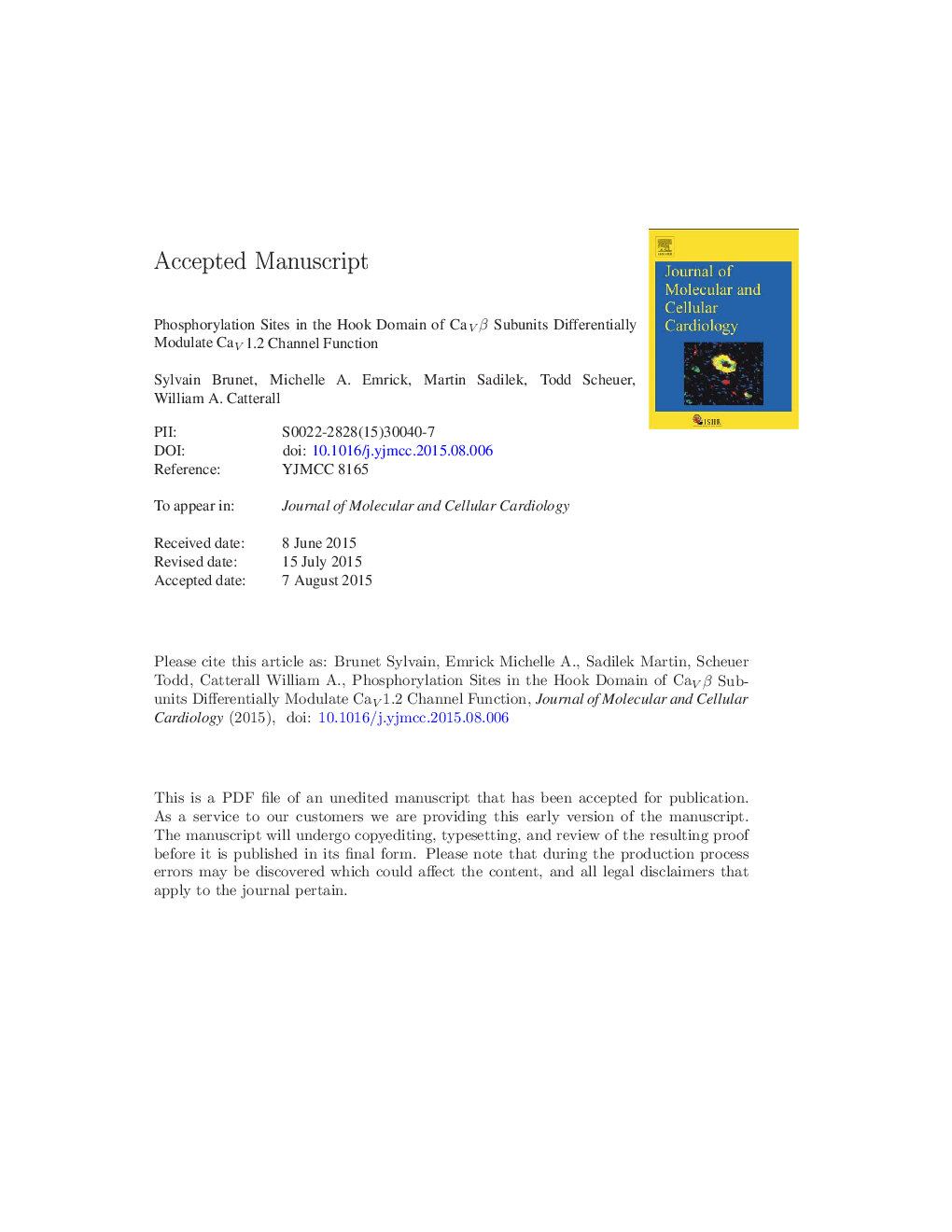| Article ID | Journal | Published Year | Pages | File Type |
|---|---|---|---|---|
| 8474097 | Journal of Molecular and Cellular Cardiology | 2015 | 26 Pages |
Abstract
Regulation of L-type calcium current is critical for the development, function, and regulation of many cell types. CaV1.2 channels that conduct L-type calcium currents are regulated by many protein kinases, but the sites of action of these kinases remain unknown in most cases. We combined mass spectrometry (LC-MS/MS) and whole-cell patch clamp techniques in order to identify sites of phosphorylation of CaVβ subunits in vivo and test the impact of mutations of those sites on CaV1.2 channel function in vitro. Using the CaV1.1 channel purified from rabbit skeletal muscle as a substrate for phosphoproteomic analysis, we found that Ser193 and Thr205 in the HOOK domain of CaVβ1a subunits were both phosphorylated in vivo. Ser193 is located in a potential consensus sequence for casein kinase II, but it was not phosphorylated in vitro by that kinase. In contrast, Thr205 is located in a consensus sequence for cAMP-dependent phosphorylation, and it was robustly phosphorylated in vitro by PKA. These two sites are conserved in multiple CaVβ subunit isoforms, including the principal CaVβ subunit of cardiac CaV1.2 channels, CaVβ2b. In order to assess potential modulatory effects of phosphorylation at these sites separately from the effects of phosphorylation of the α11.2 subunit, we inserted phosphomimetic or phosphoinhibitory mutations in CaVβ2b and analyzed their effects on CaV1.2 channel function in transfected nonmuscle cells. The phosphomimetic mutation CaVβ2bS152E decreased peak channel currents and shifted the voltage dependence of both activation and inactivation to more positive membrane potentials. The phosphoinhibitory mutation CaVβ2bS152A had opposite effects. There were no differences in peak CaV1.2 currents or voltage dependence between the phosphomimetic mutation CaVβ2bT164D and the phosphoinhibitory mutation CaVβ2bT164A. However, calcium-dependent inactivation was significantly increased for the phosphomimetic mutation CaVβ2bT164D. This effect was subunit-specific, as the corresponding mutation in the palmitoylated isoform, CaVβ2a, had no effect. Overall, our data identify two conserved sites of phosphorylation of the Hook domain of CaVβ subunits in vivo and reveal differential modulatory effects of phosphomimetic mutations in these sites. These results reveal a new dimension of regulation of CaV1.2 channels through phosphorylation of the Hook domains of their β subunits.
Related Topics
Life Sciences
Biochemistry, Genetics and Molecular Biology
Cell Biology
Authors
Sylvain Brunet, Michelle A. Emrick, Martin Sadilek, Todd Scheuer, William A. Catterall,
